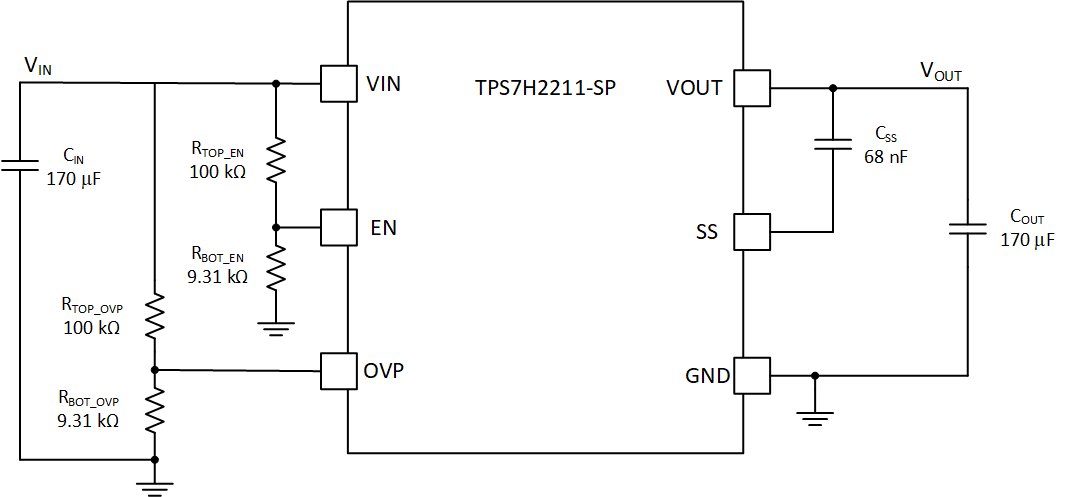SLVUCQ6 july 2023 TPS7H2211-SEP
1.3 Specification
 Figure 1-1 Default Configuration Simplified Schematic
Figure 1-1 Default Configuration Simplified SchematicTable 1-1 TPS7H2211EVM Default Configuration
| Specification | Value | Description |
|---|---|---|
| Input Voltage VIN | 12 V | Falls within the recommended device input voltage range of 4.5 V to 14 V. |
| Output Current IOUT | 0 to 3.5 A | Does not exceed maximum device continuous current of 3.5 A per device. |
| EN Turn-on Voltage VINEN_RISE | 7.4 V | Typical EN turn-on and turn-off values. Set by:R3 (RTOP_EN) = 100 kΩ R4 (RBOT_EN) = 9.31 kΩ |
| EN Turn-off Voltage VINEN_FALL | 6.1 V | |
| OVP Enter Voltage VINOVP_RISE | 13.5 V | Typical OVP enter and exit values. Set by: R2 (RTOP_OVP) = 100 kΩ R5 (RBOT_OVP) = 9.31 kΩ |
| OVP Exit Voltage VINOVP_FALL | 13.4 V | |
| Soft Start Time tSS | approx. 10 ms | Typical time to go from 10% to 90% of the final voltage. Set by: C13 (CSS) = 68 nF |
More detailed information about the default EVM configuration can be found in Figure 5-1 and Table 5-1.